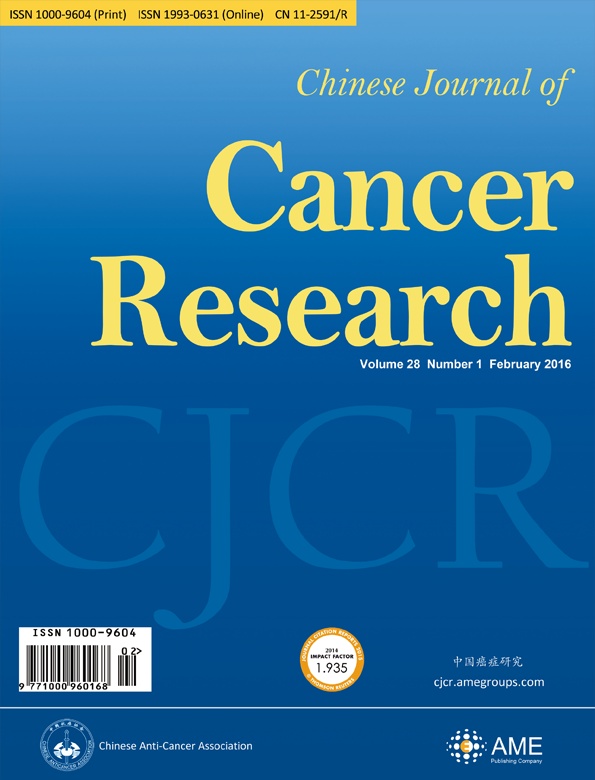基于放射组学的预测风险评分:一种用于术前预测可切除的非小细胞肺癌患者淋巴结转移风险的评分系统
IF 6.3
2区 医学
Q1 ONCOLOGY
引用次数: 22
摘要
目的建立并验证基于放射性的预测风险评分(RPRS),用于可切除的癌症(NSCLC)患者术前淋巴结(LN)转移的预测。方法回顾性分析2007年10月至2016年7月717例原发性非小细胞肺癌患者的纵隔淋巴结清扫术。利用放射组学分析方法,提取了591个基于CT的放射组学特征,构建了基于放射组学的分类器。然后,使用多变量逻辑回归分析,得出加权评分RPRS来识别LN转移。RPRS的表观预测性能通过其校准、判别和临床实用性进行评估。结果构建了基于放射组学的分类器,该分类器由13个选定的放射组学特征组成。多变量模型表明,基于放射组学的分类器、年龄组、肿瘤直径、肿瘤位置和基于CT的LN状态是独立的预测因素。当我们将相应的分数分配给每个变量时,RPRS为0−3、4−5、6、7−8和9的患者患LN的风险分别明显非常低(0%−20%)、低(21%−40%)、中等(41%−60%)、高(61%−80%)和非常高(81%−100%)。所开发的RPRS显示出良好的辨别力和令人满意的校准[C-指数:0.785,95%置信区间(95%CI):0.780−0.790]。此外,RPRS优于基于临床病理的特征模型,净再分类指数(NRI)为0.711(95%CI:0.55−0.867)。结论作为RPRS开发的新型临床评分系统可以作为一种易于使用的工具,促进可切除NSCLC患者LN转移的术前个体化预测。根据LN状态对患者进行分层可能为个体化治疗提供基础。本文章由计算机程序翻译,如有差异,请以英文原文为准。
Radiomics-based predictive risk score: A scoring system for preoperatively predicting risk of lymph node metastasis in patients with resectable non-small cell lung cancer
Objective To develop and validate a radiomics-based predictive risk score (RPRS) for preoperative prediction of lymph node (LN) metastasis in patients with resectable non-small cell lung cancer (NSCLC). Methods We retrospectively analyzed 717 who underwent surgical resection for primary NSCLC with systematic mediastinal lymphadenectomy from October 2007 to July 2016. By using the method of radiomics analysis, 591 computed tomography (CT)-based radiomics features were extracted, and the radiomics-based classifier was constructed. Then, using multivariable logistic regression analysis, a weighted score RPRS was derived to identify LN metastasis. Apparent prediction performance of RPRS was assessed with its calibration, discrimination, and clinical usefulness. Results The radiomics-based classifier was constructed, which consisted of 13 selected radiomics features. Multivariate models demonstrated that radiomics-based classifier, age group, tumor diameter, tumor location, and CT-based LN status were independent predictors. When we assigned the corresponding score to each variable, patients with RPRSs of 0−3, 4−5, 6, 7−8, and 9 had distinctly very low (0%−20%), low (21%−40%), intermediate (41%−60%), high (61%−80%), and very high (81%−100%) risks of LN involvement, respectively. The developed RPRS showed good discrimination and satisfactory calibration [C-index: 0.785, 95% confidence interval (95% CI): 0.780−0.790]. Additionally, RPRS outperformed the clinicopathologic-based characteristics model with net reclassification index (NRI) of 0.711 (95% CI: 0.555−0.867). Conclusions The novel clinical scoring system developed as RPRS can serve as an easy-to-use tool to facilitate the preoperatively individualized prediction of LN metastasis in patients with resectable NSCLC. This stratification of patients according to their LN status may provide a basis for individualized treatment.
求助全文
通过发布文献求助,成功后即可免费获取论文全文。
去求助
来源期刊
自引率
9.80%
发文量
1726
审稿时长
4.5 months
期刊介绍:
Chinese Journal of Cancer Research (CJCR; Print ISSN: 1000-9604; Online ISSN:1993-0631) is published by AME Publishing Company in association with Chinese Anti-Cancer Association.It was launched in March 1995 as a quarterly publication and is now published bi-monthly since February 2013.
CJCR is published bi-monthly in English, and is an international journal devoted to the life sciences and medical sciences. It publishes peer-reviewed original articles of basic investigations and clinical observations, reviews and brief communications providing a forum for the recent experimental and clinical advances in cancer research. This journal is indexed in Science Citation Index Expanded (SCIE), PubMed/PubMed Central (PMC), Scopus, SciSearch, Chemistry Abstracts (CA), the Excerpta Medica/EMBASE, Chinainfo, CNKI, CSCI, etc.

 求助内容:
求助内容: 应助结果提醒方式:
应助结果提醒方式:


